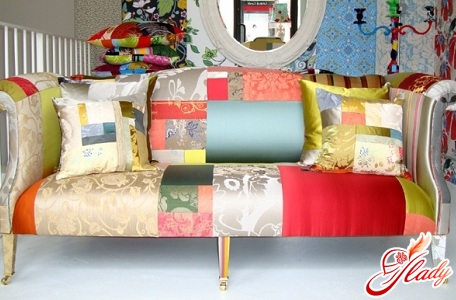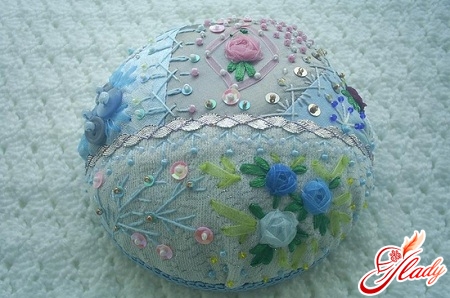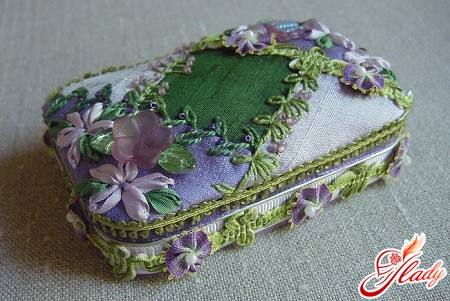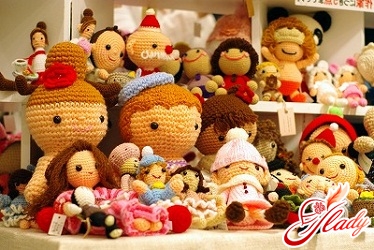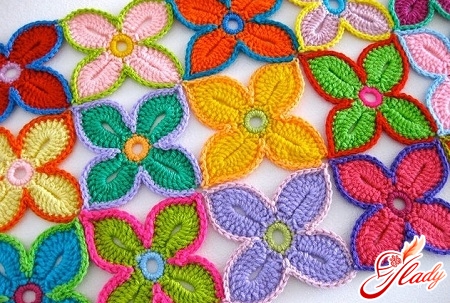 Knitting has always been, remains and, probably, stilllong will be one of the most loved and most popular types of female needlework. Agree that this is akin to magic: with the help of sticks (knitting needles, crochet, fork) to turn a long thread into a whole canvas. Yes, not just a canvas, but capable of becoming anything: from socks or pinets for babies to a smart plaid sofa or bedspreads on a double bed. About knitting, it would seem that everything is already known. And everything you can think of has already been invented. However, there are very young technicians, for example, freforms - knitting without rules. But we'll talk about the old, but little-known technique of knitting patchwork. No one will tell you whether this style developed on its own, or appeared as an analogue of the textile technique of patchwork sewing. Yes it does not matter. It is important that the things created in this style are strikingly different from any other knitwear. Having once performed a knitted patchwork, the craftsmen remain forever admirers of this amazing technique. And it's not at all easy to knit patchwork. On the contrary, it can only be experienced knitters! However, the idea itself is so simple and simple, that you are wondering how such complicated and interesting things turn out. By the way, the knitted patchwork is not represented by one single technique. Knit patchwork products with knitting needles and crochets, and various methods of creating a patchwork are used for this.
Knitting has always been, remains and, probably, stilllong will be one of the most loved and most popular types of female needlework. Agree that this is akin to magic: with the help of sticks (knitting needles, crochet, fork) to turn a long thread into a whole canvas. Yes, not just a canvas, but capable of becoming anything: from socks or pinets for babies to a smart plaid sofa or bedspreads on a double bed. About knitting, it would seem that everything is already known. And everything you can think of has already been invented. However, there are very young technicians, for example, freforms - knitting without rules. But we'll talk about the old, but little-known technique of knitting patchwork. No one will tell you whether this style developed on its own, or appeared as an analogue of the textile technique of patchwork sewing. Yes it does not matter. It is important that the things created in this style are strikingly different from any other knitwear. Having once performed a knitted patchwork, the craftsmen remain forever admirers of this amazing technique. And it's not at all easy to knit patchwork. On the contrary, it can only be experienced knitters! However, the idea itself is so simple and simple, that you are wondering how such complicated and interesting things turn out. By the way, the knitted patchwork is not represented by one single technique. Knit patchwork products with knitting needles and crochets, and various methods of creating a patchwork are used for this.
Feature of knitting patchwork
This style differs from other traditional techniques(Tunisian knitting, Scandinavian patterns, etc., etc.) using the reception of the connection of individual elements in the whole canvas. That is, knitted squares, diamonds, triangles are tied separately or sequentially, becoming a single whole. With textile patchwork this technology is related only to the use of elements of strict geometric shapes or symmetrical ornamental figures (flowers, stars). The same feature distinguishes this style from the freeform (knitting techniques without rules), where elements of arbitrary shape and size are used. And another characteristic feature of knitting patchwork can be considered the possibility of working with both knitting needles and a hook. And in that, and in another case for a patchwork knit fabric use smooth knitting, openwork or relief patterns. Knit patchwork can be knitted in various ways, which determine the kind of knitting in the patchwork style. 
Modular knitting
The simplest and most constructive way is knowncalled "modular knitting". With this method, each new element is knitted from the edge loops of the previous part. That is, initially loops are recruited from the calculation of the size of one part, which becomes the basis of the entire canvas. And exactly how it will fit in the whole canvas, depends on the original idea. You can knit each new element forward (up and to the side) by placing the first part in the corner of the canvas. You can knit in a spiral, placing the main element in the center and tying it, increasing the canvas in all directions from the center. Using this method, in advance come up with a drawing (scheme) of the product on checkered paper. According to this drawing, the order of work and the direction of knitting are determined. This method was officially patented in the forties of the last century by Virginia Bellamy, who called this technique "numerical knitting." She also introduced the concept of an "elementary square". So modular knitting involves the use of knitted patchwork for square details, knitted with spokes.
Crochet patchwork
Crocheted patchwork - more eleganttechnique than modular knitting. By this technology, individual elements of any geometric form (squares, circles, triangles) are isolated, which then are joined into the whole canvas with the help of the same hook. At first glance, the technique is much simpler: I have imposed a multicolored patchwork on the crochet, and then put them together into one, laid out with a pattern or ornament. On the other hand, this technique requires more painstaking work, but it also provides much more opportunities for drawing patterns. Crocheted details are more dense and hold shape better. So connecting them to each other, in general, is easy, but with sufficient experience of crocheting. In addition, the elements themselves can be made multi-colored and patterned, due to which the patchwork becomes brighter and "more fun". 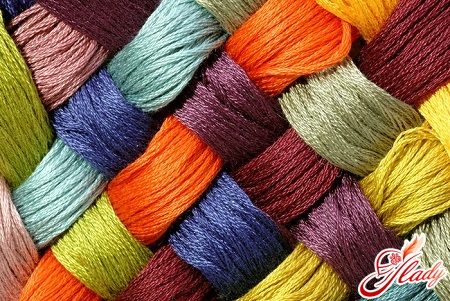
Enterlak
Another kind of patchwork. Very interesting, quite old technique, outwardly similar to the usual knitted patchwork. At first glance, things related to the technique of anterlak seem to be woven from individual long knitted stripes. Yes, and the enterlak-pattern, more like a real weaving. However, it turns out when using this technique, a knitted fabric. And, interestingly, some elements in the Enteraklak products are untied without breaking the thread. If the method of numerical knitting is used in the modular patchwork, the entlak is the patchwork method knitted in a partial way (partial knitting). The pattern itself can be two-color or one-color and consists of geometric shapes, as in traditional patchwork. And despite the complexity of this technique, it turns out to be very convenient, since the canvas leaves whole knit, and in case of error it is easy to dissolve, keeping the yarns whole. Knitting in the technique of endlac is performed in the longitudinal, in the transverse or in the diagonal direction. When tying the pattern, it is divided into separate sections (elements), and the spokes are alternately inserted and withdrawn from work, changing the direction of knitting. Here, strictly speaking, and all the basic techniques of knitting patchwork. What do you know better, with needles or crochet? Try to master the patchwork using more familiar tools. However, it is never too late to start knitting with knitting needles or with a hook. Especially since you can master not simple knitting, but special technique of knitted patchwork - knitted patchwork. Dare, and you will succeed! We advise you to read:





